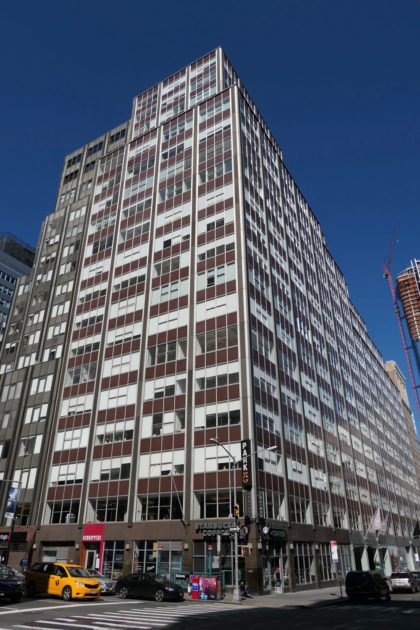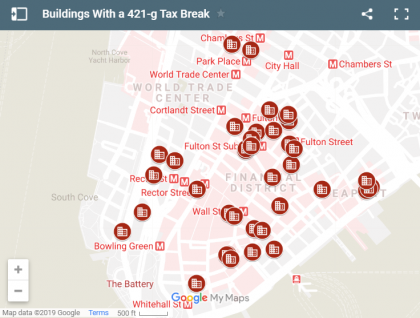50 Murray tenant suit headed to the top
In June, the New York State Court of Appeals decided in favor of the tenants at 50 Murray (also 53 Park Place), confirming that they deserved rent stabilization as a quid pro quo for a tax abatement taken in the early aughts. But the landlord — Clipper Equity — now claims the decision violates the Constitution’s Fifth Amendment, and is taking the case to the US Supreme Court. It’s a long shot, or as residents at 50 Murray call it, a delay tactic. “They are just trying to wear us down,” said John Kuzmich, who has led this fight for tenants for the past three years.
But tenants are keeping up the fight, and also looking for more to join in. If you live in either building and have since 2017 (50 Murray) or 2015 (53 Park Place) and want to join, the 50 Murray Tenants Association is taking names and info just until Dec. 4. Respond to info@50mta.com.
Here’s how it’s gone down so far (and note the similarities here with the saga at Gateway):
- The original developer took a 421-g tax abatement, which was in place between 2001 and 2017 depending on the building, and in exchange, tenants were to receive rent stabilization
- In 2014 the buildings were bought by Clipper, and rents started rising dramatically, in some cases as much as 30 percent in one year
- Kuzmich was incensed as he watched his own rent rise, so he did some research and discovered the abatement
- By 2016 he and 41 units had joined a lawsuit in New York Supreme Court claiming they had rights to stabilized rents. They won.
- The landlord countersued in the Appellate Division in January 2018. It won.
- The tenants filed another suit in the New York Court of Appeals — the state’s highest court. They won in June 2019.
- Clipper Equity filed a petition this week asking the Supreme Court to review the case on the basis of the takings clause in the Fifth Amendment.
- The tenants have filed papers opposing the petition
Sixteen new units have joined the suit, and Kuzmich expects there will be more. No one has seen any money yet and that may be a long way off; once the Supreme Court petition plays out, tenants will come up with what they are owed, the landlord will do the same, and the judge from the state Supreme Court will referee the overcharges.
At stake here, Kuzmich says, is rent money, yes, but also the fabric of downtown. After rents started rising, families cleared out, leaving once rents hit their breaking point and “tearing the place apart.”
“They were given millions of dollars in tax abatements to lure tenants downtown and to have them put down roots, not just become a revolving door,” Kuzmich notes. “I don’t bemoan a profit motive, but if you are taking dollars from taxpayers, you better fulfill your obligation. We are in the right here.”
For further reading, The City has an interactive map (shown above) that allows you to click on the buildings in the area that have also received a 421-g tax break.















Link to the Supreme Court docket for the case: https://www.supremecourt.gov/search.aspx?filename=/docket/docketfiles/html/public/19-554.html
How long is rent stabilization required? Is the tax abatement set for so many years and then rents are allowed to increase? Seems like the company that bought the buildings should’ve been aware Of the problems in trying to increase the rents.
Rita – rent stabilization was to be applied to the units which were under lease during the rent abatement period. Without a rent stabilized lease, the penalty to the landlord includes:
– Stabilization for life (while the tenant is still a leasee), and
– Rent overcharge refund
Once the tax abatement is done, if the tenant had a valid rent stabilized lease, the landlord could have de-registered the apartment making it a market rate unit.
While I do have a real estate license, I am no lawyer, but I agree the landlord knew about the abatement (how couldn’t they?!), and the 421-g exposure on purchase of the buildings. Their recent quarterly conference call indicated the lawsuit should have no real impact on their revenue and net profit. Yet they are fighting so hard to maintain an illegal position vis-à-vis their tenants. Strange.